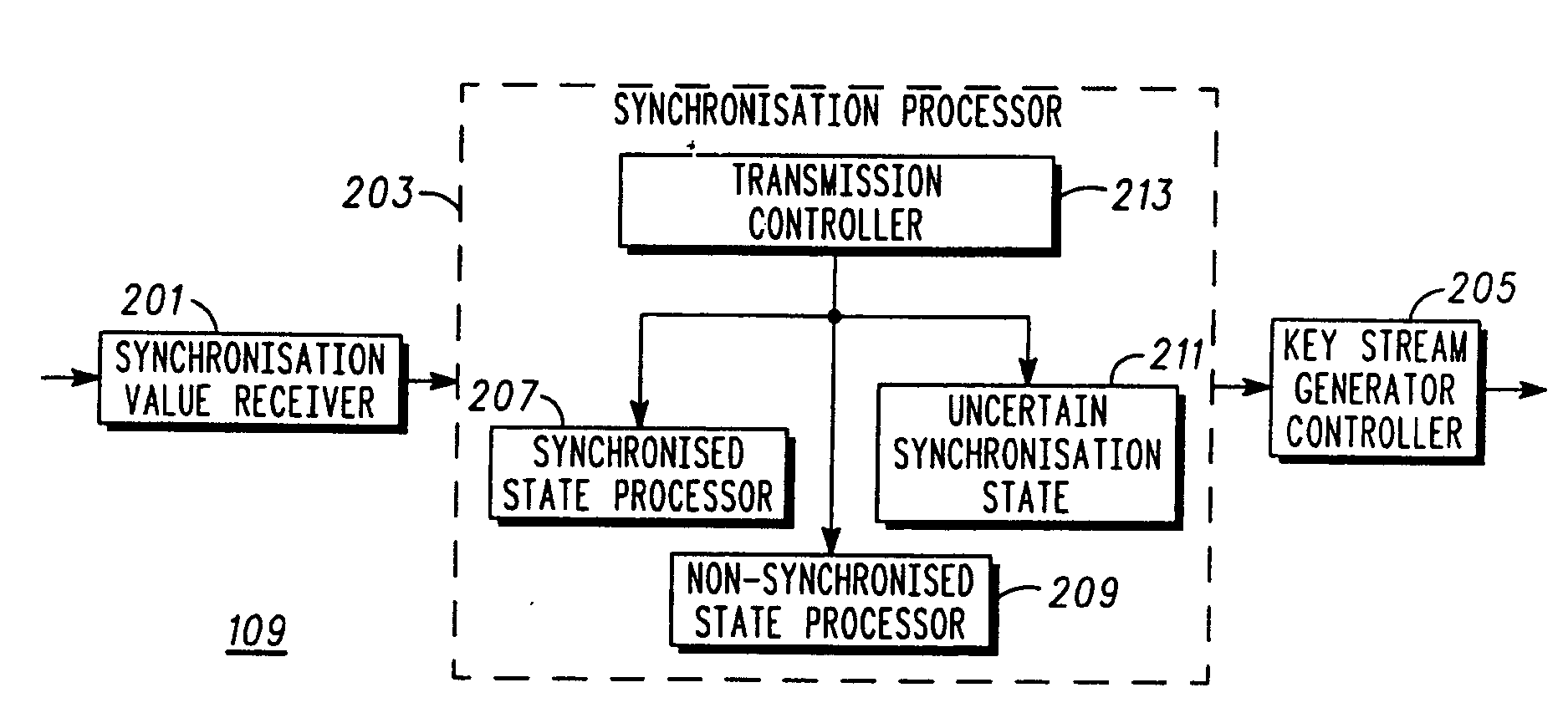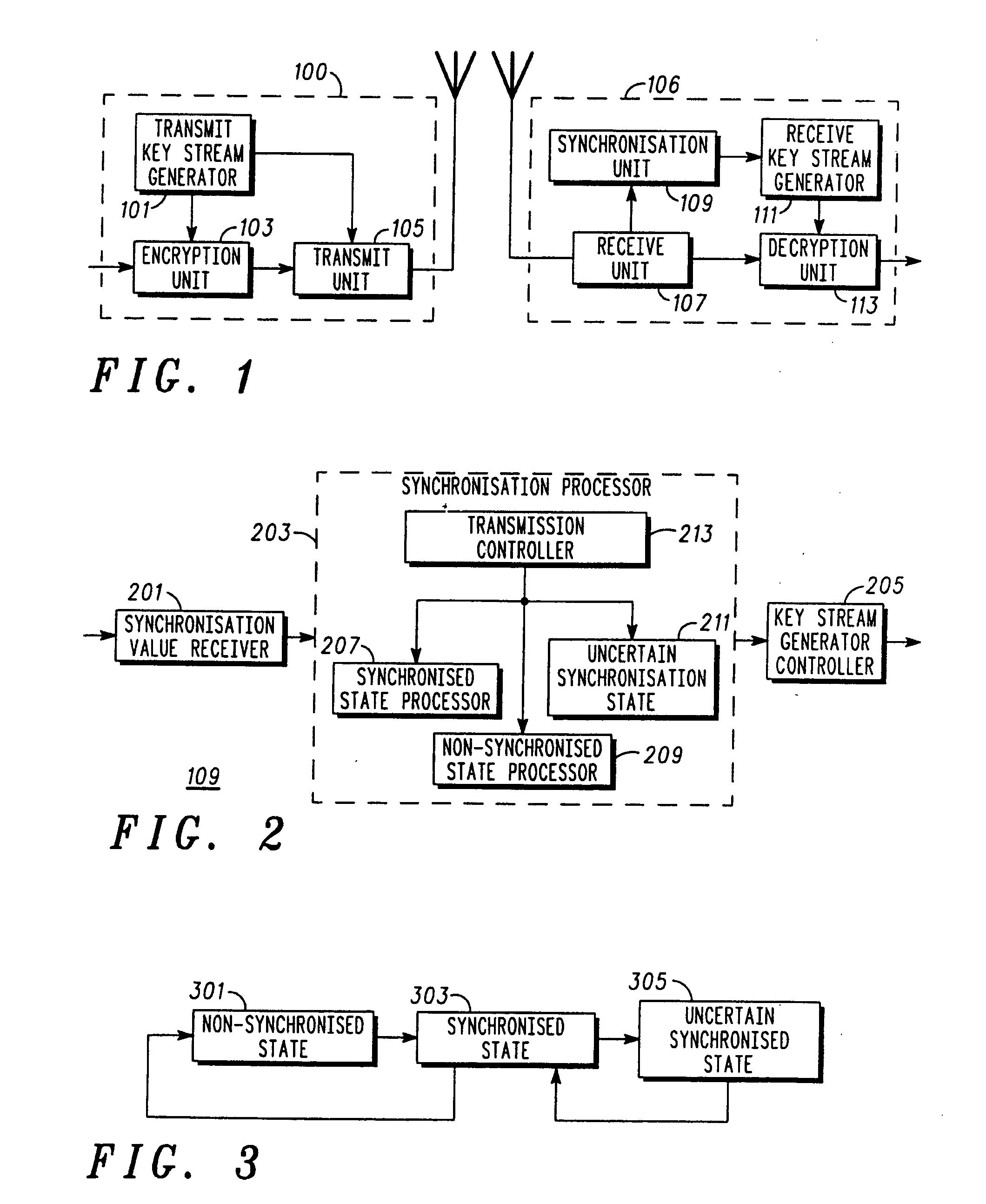Method and apparatus for decrypting a communication
- Summary
- Abstract
- Description
- Claims
- Application Information
AI Technical Summary
Benefits of technology
Problems solved by technology
Method used
Image
Examples
Embodiment Construction
[0048]The following description focuses on an embodiment of the invention applicable to a TETRA cellular communication system. However, it will be appreciated that the invention is not limited to this application but may be applied to many other communication systems.
[0049]An embodiment of the invention will be described wherein an encrypted call is performed between a transmitter and a receiver both being compliant with the ETSI specification EN 302 109 v1.1.1. For brevity and clarity, the embodiment is described with reference to a voice call but in other embodiments other communication types may be supported such as for example a data call. The transmitter may specifically be part of a first subscriber terminal (such as a mobile station) and the receiver may specifically be part of a second subscriber terminal.
[0050]FIG. 1 illustrates a system for communicating an encrypted call in accordance with an embodiment of the invention.
[0051]A transmitter 100 comprises a transmit key str...
PUM
 Login to View More
Login to View More Abstract
Description
Claims
Application Information
 Login to View More
Login to View More - R&D
- Intellectual Property
- Life Sciences
- Materials
- Tech Scout
- Unparalleled Data Quality
- Higher Quality Content
- 60% Fewer Hallucinations
Browse by: Latest US Patents, China's latest patents, Technical Efficacy Thesaurus, Application Domain, Technology Topic, Popular Technical Reports.
© 2025 PatSnap. All rights reserved.Legal|Privacy policy|Modern Slavery Act Transparency Statement|Sitemap|About US| Contact US: help@patsnap.com


